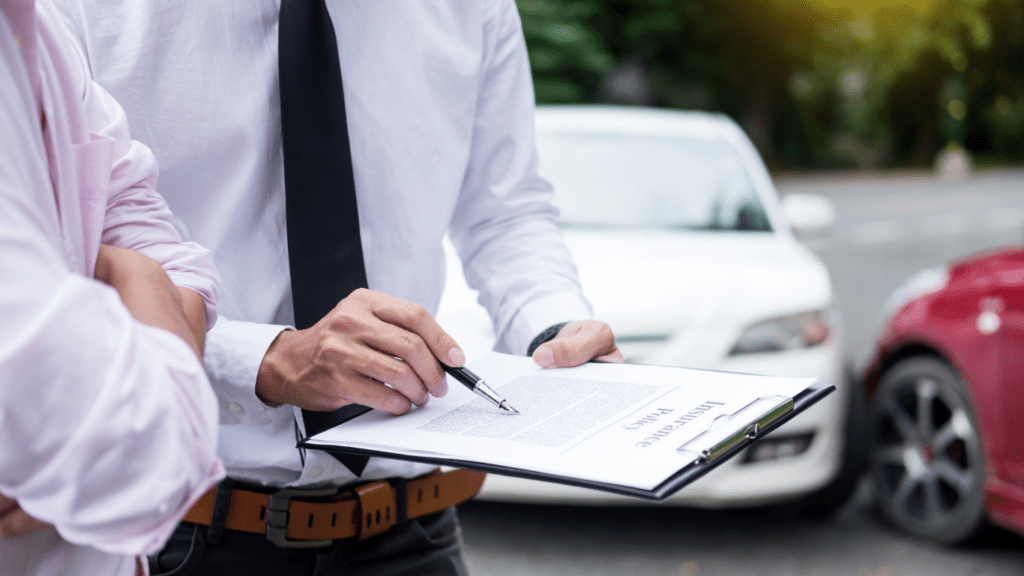Immediate Steps After a Car Accident
Knowing what steps to take immediately after a car accident can reduce stress and help ensure the situation is handled correctly. Here’s what to do next.
Ensure Safety and Call for Help
Check if anyone is injured. If there are injuries, call 911 right away. If the vehicles are drivable and safe to move, pull them to the side of the road to prevent further accidents. Turn on hazard lights to alert other drivers.
Exchange Necessary Information
Collect essential details from all parties involved. This includes names, addresses, phone numbers, driver’s license numbers, and insurance information.
Take note of vehicle makes, models, and license plate numbers. If there are witnesses, get their contact information too.
Assessing the Damage
After ensuring everyone’s safety, it’s crucial to assess the damage to your vehicle. This step is vital for insurance claims and future repairs.
Evaluate Vehicle Damage
Survey the entire vehicle to identify visible damage. Examine all sides, noting dents, scratches, and broken parts. Check for fluid leaks under the car. Inspect the tires for punctures or damage. Assess the interior for any signs of impact.
Document the Accident Scene
Take clear photos of the accident scene from multiple angles. Capture the position of all vehicles involved. Include street signs, traffic signals, and any skid marks.
Record the license plate numbers and any visible damages. If possible, draw a simple diagram of the accident layout. Write down the time, date, and location of the accident for your records.
Contacting Your Insurance Company

Contacting my insurance company promptly after a car accident simplifies the claims process. Communicating the right information efficiently aids in a swift resolution.
What Information to Provide
When contacting my insurance company, I provide essential details to ensure accurate and timely processing of my claim:
- Policy Number: Ensures identification of my specific insurance coverage.
- Accident Date and Time: Establishes the incident timeline.
- Location: Specifies where the accident occurred.
- Involved Parties: Includes names, contact details, and insurance information of all drivers.
- Police Report Number: If available, validates the incident officially.
- Description of the Accident: Outlines events and conditions leading up to the crash.
Understanding the Claims Process
Understanding the claims process improves efficiency and clarity:
- Claim File: My insurance company assigns a claim number for reference.
- Adjuster Assignment: An adjuster reviews my claim, inspects the vehicle, and estimates repair costs.
- Documentation Submission: I must submit required documents promptly to avoid delays.
- Settlement: Once the review’s complete, I receive a settlement offer covering repairs or replacements as per my policy terms.
Communicating clearly with my insurance company expedites the claims process, ensuring minimal disruption following a car accident.
Managing Insurance Claims
Managing insurance claims efficiently can significantly reduce stress levels after a car accident. Knowing how to proceed can expedite the claims process and ensure fair compensation.
Navigating Fault vs. No-Fault States
Insurance requirements and claims processes differ between fault and no-fault states. In fault states, the driver responsible for the accident must cover damages through their insurance.
It’s essential to provide evidence proving who was at fault, which can involve sourcing statements from witnesses or police reports.
In no-fault states, each driver’s insurance covers their own damages, regardless of fault. Personal Injury Protection (PIP) coverage generally applies in these states and often includes medical expenses, lost wages, and other accident-related costs. Familiarizing myself with state-specific regulations can prevent delays or denied claims.
- Immediate Documentation: Take detailed photos of all vehicles involved, road conditions, and traffic signs at the accident scene. Collect personal information and insurance details from all parties.
- Prompt Notification: Inform my insurance company as soon as possible. Provide my policy number, accident details, involved parties, and the police report number during the initial communication.
- Organized Records: Maintain a file with all accident-related documents, including medical bills, repair estimates, and correspondences with my insurance company.
- Follow-Up: Regularly check the status of my claim. Contact the claims adjuster for updates to ensure that all required documents are submitted and that the claim moves forward without unnecessary delays.
- Settlement Review: Evaluate any settlement offer carefully. I may consult a legal expert to ensure fairness if the offer seems insufficient.
Understanding how to manage insurance claims can lead to a smoother recovery process and better outcomes in resolving post-accident issues.
Legal Considerations
Navigating the legal landscape after a car accident is crucial for protecting your rights and interests.
When to Consult a Lawyer
Contacting a lawyer is essential in complex situations. If severe injuries occur, legal guidance becomes necessary to navigate medical expenses and compensation claims.
Accidents involving significant property damage or disputes over fault also require an attorney’s expertise. Seek legal advice if the insurance provider disputes your claim, refuses to pay, or delays settlements. In such situations, hiring a car accident lawyer Boston can help protect your rights and ensure you receive the compensation you deserve.
Consult a lawyer within the first few days after the accident to ensure timely and appropriate action.
Understanding Settlements
Understanding how settlements work is vital for informed decision-making. Insurance companies often offer initial settlements quickly, but these offers might not cover all incurred costs.
Review all settlement offers carefully, considering medical expenses, lost wages, and future damages. Consulting a lawyer can help evaluate if the offer is fair and negotiate better terms.
Signing a settlement release precludes any future claims, so ensure comprehensive compensation before finalizing.

